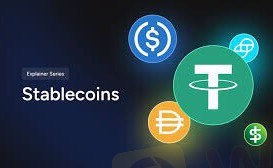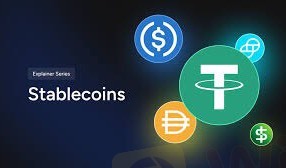
2025-02-17 23:26
Industry_Tether (USDT) and other stablecoins_
#firstdayofthenewyearstylz
Stablecoins are a type of cryptocurrency designed to maintain a stable value relative to a fiat currency, such as the US dollar. Tether (USDT) is one of the most popular stablecoins, but there are many others. Here's an overview of Tether and other stablecoins:
# Tether (USDT)
1. *Launch*: 2014
2. *Value*: Pegged to the US dollar (1 USDT = 1 USD)
3. *Collateralization*: Initially claimed to be fully backed by USD reserves, but later revealed to be partially backed by other assets
4. *Usage*: Widely used in cryptocurrency trading, especially for USD-denominated transactions
# Other Stablecoins
1. *USD Coin (USDC)*: Launched in 2018, fully backed by USD reserves, and audited by Grant Thornton
2. *Paxos Standard (PAX)*: Launched in 2018, fully backed by USD reserves, and regulated by the New York State Department of Financial Services
3. *TrueUSD (TUSD)*: Launched in 2018, fully backed by USD reserves, and audited by Cohen & Company
4. *Gemini Dollar (GUSD)*: Launched in 2018, fully backed by USD reserves, and regulated by the New York State Department of Financial Services
5. *DAI*: Launched in 2017, collateralized by other cryptocurrencies (e.g., ETH), and maintained by the MakerDAO protocol
# Characteristics of Stablecoins
1. *Price stability*: Designed to maintain a stable value relative to a fiat currency
2. *Collateralization*: Backed by reserves of fiat currency, other cryptocurrencies, or other assets
3. *Regulation*: Varying levels of regulation, depending on the issuer and jurisdiction
4. *Transparency*: Varying levels of transparency, depending on the issuer and auditing practices
# Benefits and Risks of Stablecoins
1. *Benefits*:
- Reduced volatility compared to other cryptocurrencies
- Increased liquidity and trading volume
- Potential for lower transaction fees
2. *Risks*:
- Counterparty risk (issuer default)
- Regulatory risk (changes in regulations)
- Market risk (fluctuations in underlying assets)
- Security risk (hacking and theft)
In conclusion, stablecoins like Tether and others offer a unique solution for cryptocurrency traders and investors seeking reduced volatility and increased liquidity. However, it's essential to carefully evaluate the characteristics, benefits, and risks of each stablecoin before using them .
Like 0

Yewande
Brokers
Hot content
Industry
Event-A comment a day,Keep rewards worthy up to$27
Industry
Nigeria Event Giveaway-Win₦5000 Mobilephone Credit
Industry
Nigeria Event Giveaway-Win ₦2500 MobilePhoneCredit
Industry
South Africa Event-Come&Win 240ZAR Phone Credit
Industry
Nigeria Event-Discuss Forex&Win2500NGN PhoneCredit
Industry
[Nigeria Event]Discuss&win 2500 Naira Phone Credit
Forum category

Platform

Exhibition

Agent

Recruitment

EA

Industry

Market

Index
_Tether (USDT) and other stablecoins_
 Nigeria | 2025-02-17 23:26
Nigeria | 2025-02-17 23:26#firstdayofthenewyearstylz
Stablecoins are a type of cryptocurrency designed to maintain a stable value relative to a fiat currency, such as the US dollar. Tether (USDT) is one of the most popular stablecoins, but there are many others. Here's an overview of Tether and other stablecoins:
# Tether (USDT)
1. *Launch*: 2014
2. *Value*: Pegged to the US dollar (1 USDT = 1 USD)
3. *Collateralization*: Initially claimed to be fully backed by USD reserves, but later revealed to be partially backed by other assets
4. *Usage*: Widely used in cryptocurrency trading, especially for USD-denominated transactions
# Other Stablecoins
1. *USD Coin (USDC)*: Launched in 2018, fully backed by USD reserves, and audited by Grant Thornton
2. *Paxos Standard (PAX)*: Launched in 2018, fully backed by USD reserves, and regulated by the New York State Department of Financial Services
3. *TrueUSD (TUSD)*: Launched in 2018, fully backed by USD reserves, and audited by Cohen & Company
4. *Gemini Dollar (GUSD)*: Launched in 2018, fully backed by USD reserves, and regulated by the New York State Department of Financial Services
5. *DAI*: Launched in 2017, collateralized by other cryptocurrencies (e.g., ETH), and maintained by the MakerDAO protocol
# Characteristics of Stablecoins
1. *Price stability*: Designed to maintain a stable value relative to a fiat currency
2. *Collateralization*: Backed by reserves of fiat currency, other cryptocurrencies, or other assets
3. *Regulation*: Varying levels of regulation, depending on the issuer and jurisdiction
4. *Transparency*: Varying levels of transparency, depending on the issuer and auditing practices
# Benefits and Risks of Stablecoins
1. *Benefits*:
- Reduced volatility compared to other cryptocurrencies
- Increased liquidity and trading volume
- Potential for lower transaction fees
2. *Risks*:
- Counterparty risk (issuer default)
- Regulatory risk (changes in regulations)
- Market risk (fluctuations in underlying assets)
- Security risk (hacking and theft)
In conclusion, stablecoins like Tether and others offer a unique solution for cryptocurrency traders and investors seeking reduced volatility and increased liquidity. However, it's essential to carefully evaluate the characteristics, benefits, and risks of each stablecoin before using them .
Like 0
I want to comment, too
Submit
0Comments

There is no comment yet. Make the first one.


Submit
There is no comment yet. Make the first one.